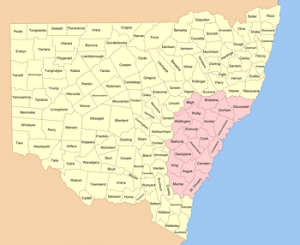What The “%&#$” Is A Section 32?
I still remember the first time I met an agent for a viewing at a property for sale. After walking around for a few minutes and sharing with him my investing strategy, he asked me, “Would you like me to send you a copy of the Section 32?” “Oh, yes of course,” I said, and nodded confidently. Then I got in the car and phoned my builder-friend to ask, “What the “%&#$” is a Section 32?”
A Section 32 is also sometimes referred to as a “vendor’s statement.” In fact, a vendor’s statement is called a Section 32 only in Victoria. The name comes from Section 32 of the Victorian Sale of Land Act, which stipulates the information that a vendor must provide to a potential buyer. The law states that this statement must be given to the purchaser before the contract of sale is signed.
If you’re outside Victoria, a vendor’s statement might be called:
- New South Wales (NSW): Schedule 1 Prescribed Documents.
- South Australia (SA): Form One Disclosure Statement.
- Western Australia (WA): Seller’s Disclosure Statement.
- Australian Capital Territory (ACT): Required Documentation for the Sale of Residential Property or Land.
- Queensland: No legal requirement for a vendor’s statement.
- Northern Territory: No legal requirement for a vendor’s statement.
- Tasmania: No legal requirement for a vendor’s statement.
Although other states have a different name, where it is required, the vendor’s statement typically contains much of the same sorts of information. Victoria seems to have the most thorough requirement, but NSW, SA, WA and ACT has got your back, as well. If you live in Queensland, Northern Territory or Tasmania, you’ll need to lean heavily on your conveyancer to check for all the necessary information.
If you’re buying interstate, be sure you’re aware of how the requirements may be different.
What You Can Find in the Vendor’s Statement
The vendor’s statement should provide information that is not readily found through a property inspection. Where a vendor’s statement is required, you can expect to see most of the following:
 The name and details of the vendor.
The name and details of the vendor.- Details about the title, including existing boundary measurements of the land.
- Details of any mortgages over the property.
- Details about costs of owning the land, such as rates and body corporate / strata fees.
- Building restrictions that may exist.
- Easements over the land, such as where drainage or sewerage runs.
- Covenants that restrict the use of the land.
- Some planning or zoning information.
- Information on services connected to the property.
To see exactly what Victoria requires a vendor to disclose before selling, have a look at this Consumer Affairs website.
What You Won’t Find in the Vendor’s Statement
A vendor’s statement will not include any of the following information:
- The condition of the dwellings on the property.
- Confirmation that the existing structures comply with building regulations.
- The accuracy of measurements on the title.
- All details that might be relevant before proceeding with a subdivision or development.
Your professional building inspector should uncover any issues related to information that is not found on a vendor’s statement. This is particularly important if you’ve noticed any potential structural issues like cracks in the walls, or floors and ceilings that are not level.
If you’re considering a subdivision of a property, it’s wise to meet with a council town planner for a pre-lodgment meeting before signing a contract.
Why You Should Care About the Vendor’s Statement
 The vendor’s statement is intended to protect the purchaser of the property and ensure that relevant information is available before purchase. Sometimes information that should be in a vendor’s statement is not there. You should always use the services of a qualified conveyancer to confirm that the information on the vendor’s statement is accurate.
The vendor’s statement is intended to protect the purchaser of the property and ensure that relevant information is available before purchase. Sometimes information that should be in a vendor’s statement is not there. You should always use the services of a qualified conveyancer to confirm that the information on the vendor’s statement is accurate.
A vendor’s statement exists to help you, the purchaser, collect the basic information necessary in your due diligence. But there’s much more to due diligence than just reviewing a document. In Steve McKnight’s Property Apprenticeship course, we devote over 20 sessions to detailing all of the due diligence that an experienced investor should cover before purchasing a property.
Many of the people that I’ve coached hold properties that they wish they didn’t own. Before you rush out and buy a property, it’s important that you take the time to educate yourself, so you can buy with confidence.
Comments
Got something to say? Post a comment...
You must be logged in to post a comment.


 The name and details of the vendor.
The name and details of the vendor.



Thanks for the article. I’ve always left these details up to a solicitor but I know I also need to tighten up on my due diligence.
Thanks for commenting Fergie. You’re in good company. Most investors struggle with due diligence. Steve is in the process of creating a new due diligence program to address this issue.
I wish I’d read this last week, I just embarrassed myself asking a NSW agent for a Section 32! (I’m in Victoria).
Happens to the best of us :-). It’s hard to keep up with all the different state terminology.
Excellent explanation of what S.32 is all about and how we can best use it -in the different states!
Thanks Jason.